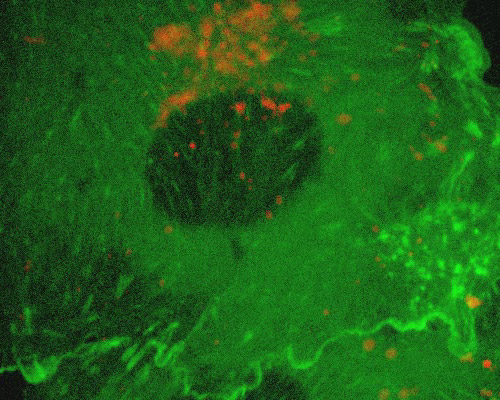Monkey Kidney Cells with mEmerald-Plastin and mRuby-LAMP1

One of the most prominent uses of the African green monkey in biomedical research today is breeding colonies of the vervet for their genetic resources and extensive phenotyping. The vervet is similar to the rhesus in physiology and behavior and is also closely related to humans. African green monkey kidney epithelial cells (BS-C-1 line) are more accessible, however, less expensive, and may also prove to have fewer health and safety risks than rhesus cells. The EGFP variant mEmerald was utilized to visualize plastin in the digital video sequence in this section, while late endosomes were tagged with mCherry fused to Rab7a.
Lysosomes characteristically contain various hydrolytic enzymes that promote the digestion of a broad range of cellular materials. The lysosomes present in the BS-C-1 cells featured in the digital video sequence in this section were visualized with mRuby. A relatively bright red fluorescent protein, mRuby experiences peak excitation at 558 nanometers and peak emission at 605 nanometers. mRuby is a monomeric derivative of the tetrameric far-red fluorescent protein eqFP611.



